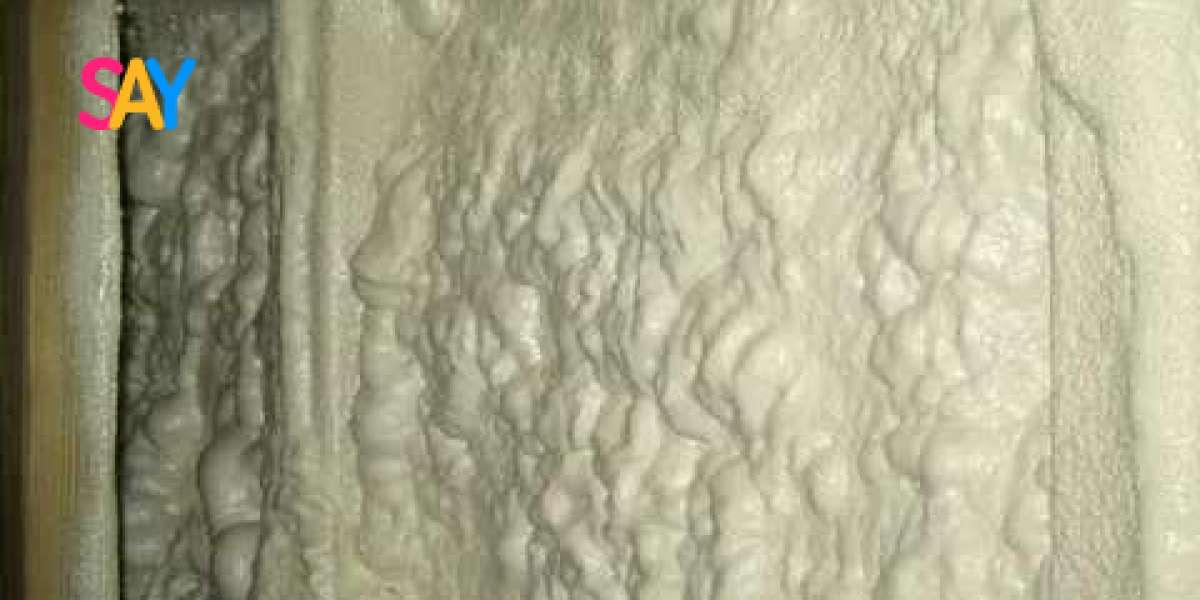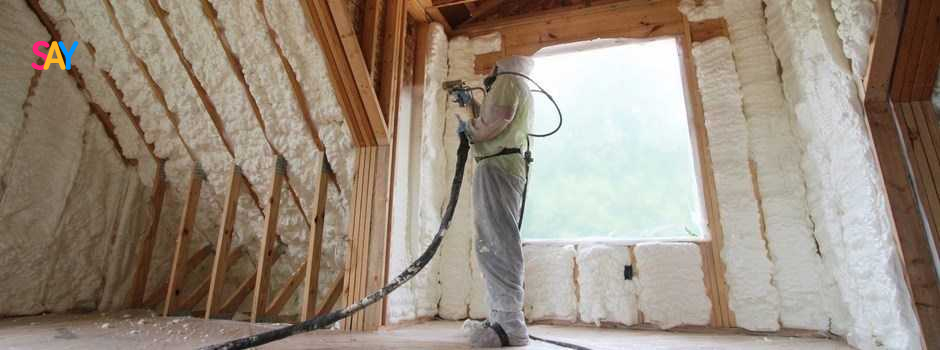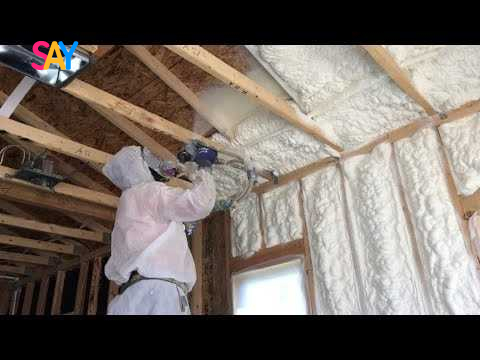Open-cell spray foam works best in attics and walls because it expands to fill every gap while allowing walls to breathe. This lightweight insulation creates an effective air barrier that stops drafts, reduces noise, and cuts energy bills by 15-30%. Its flexibility prevents damage from normal house settling and wood movement, unlike rigid insulation options.
The open cell spray foam insulation structure manages moisture effectively by allowing vapor to pass through rather than trapping it, which helps prevent mold and rot in wood framing. This makes it particularly useful in humid climates and for attics where temperature differences can create condensation issues.
How Open-Cell Spray Foam Compares to Alternatives
When choosing insulation, understanding the differences between options helps you make an informed decision:
Feature | Open-Cell Spray Foam | Closed-Cell Spray Foam | Fiberglass Batts | Cellulose |
|---|---|---|---|---|
R-value per inch | 3.5-3.7 | 6.0-7.0 | 2.9-3.8 | 3.2-3.8 |
Air sealing | Excellent | Excellent | Poor | Good |
Moisture barrier | Permeable | Impermeable | None | Slight resistance |
Sound dampening | Excellent | Good | Fair | Good |
Typical cost per sq ft | $0.44-$0.65 | $1.00-$1.50 | $0.30-$0.40 | $0.35-$0.50 |
Installation complexity | Professional only | Professional only | DIY possible | DIY possible |
Flexibility | High | Low | Medium | High |
Technical Specifications of Open-Cell Spray Foam
Understanding the technical aspects helps you know what to expect from open-cell spray foam:
Property | Typical Value | Benefit |
|---|---|---|
Density | 0.4-0.5 lb/ft³ | Lightweight, less structural load |
R-value | 3.5-3.7 per inch | Effective thermal resistance |
Air permeance | 0.02 L/s/m² | Blocks air movement |
Vapor permeance | 5-10 perms | Allows moisture to dissipate |
Expansion | 100-120x initial volume | Fills irregular cavities completely |
Sound Transmission Class | STC 37-39 | Reduces noise transmission |
VOC emissions after curing | Minimal | Healthy indoor air quality |
Fire rating | Class I fire rating (with fire retardants) | Safety compliance |
Benefits in Attic Applications
Open-cell spray foam transforms attics into highly efficient spaces by:
- Creating a seamless air barrier across the entire roof line
- Reducing heat transfer into living spaces below
- Minimizing the stack effect (warm air rising and escaping)
- Protecting roof decking from moisture damage
- Allowing roof leaks to be visible (water passes through rather than getting trapped)
Bonus Tip: Installing open-cell foam directly to the underside of your roof deck can convert your attic to a semi-conditioned space, protecting HVAC equipment and ductwork from extreme temperatures and potentially increasing their efficiency by 5-10%.
According to industry research, homes with properly installed open-cell spray foam in attics can reduce cooling costs by up to 25% compared to traditional insulation methods, particularly in hot climates where attic temperatures can exceed 150°F.
Advantages in Wall Applications
In wall cavities, open-cell spray foam offers several benefits:
- Fills irregular spaces and gaps around electrical outlets and plumbing
- Reduces outside noise transmission
- Creates flexibility that accommodates natural house movement
- Allows wall assemblies to dry in multiple directions
The sound dampening properties of open-cell foam can reduce noise transmission through walls by 30-50% compared to unfilled wall cavities, making it excellent for home offices, bedrooms, and media rooms.
Things to Consider Before Making a Decision
Before choosing open-cell spray foam for your project:
- Climate Zone: In extremely cold regions, higher R-value options or hybrid systems might be more appropriate.
- Budget Constraints: The upfront cost runs 2-3 times higher than traditional insulation, though energy savings offset this over time.
- Existing Home Considerations: Proper ventilation assessment is crucial, as tightening the building envelope affects how your home manages air exchange.
- Project Timeframe: The foam needs 24-48 hours to fully cure and off-gas before reoccupying spaces.
- Contractor Qualifications: Proper installation is critical—check certification, experience, and references of installers.
Bonus Tip: For existing homes, consider an energy audit before installation. This identifies specific problem areas and helps determine if other energy efficiency improvements should be made simultaneously with insulation upgrades.
Installation Process
Understanding the installation process helps set realistic expectations:
- Preparation: Covering surfaces not being insulated, turning off HVAC systems
- Safety Measures: Installers wear protective equipment, and premises are vacated during installation
- Application: Two liquid components mix at the spray nozzle and expand on contact with surfaces
- Expansion: Foam expands to fill cavities (typically 3-4 inches in walls, 5-7 inches in attics)
- Trimming: Excess foam is trimmed flush with framing where needed
- Ventilation: Space is ventilated until foam fully cures (24-48 hours)
The entire process for an average home (2,000 sq ft) typically takes 1-2 days for application, plus curing time.
Open-Cell Spray Foam FAQ
How long does open-cell spray foam last?
Open-cell spray foam typically lasts the lifetime of the building, 80+ years under normal conditions. Unlike traditional insulation that can settle or degrade, properly installed spray foam maintains its properties for decades without replacement.
Can open-cell spray foam cause moisture problems?
In most climates, open-cell foam's vapor-permeable nature helps manage moisture. However, in very cold climates (Zone 5 and above), a vapor retarder may be needed on the warm side of the wall assembly to prevent condensation within the foam. Always consult local building codes.
Is open-cell spray foam safe for my family?
Once fully cured (24-48 hours after installation), open-cell foam is considered safe for occupants. Modern formulations have low VOC emissions. During installation, however, the home should be vacated, and only trained professionals wearing proper protective equipment should be present.
Can I install open-cell spray foam myself?
DIY kits exist but aren't recommended for whole-house applications. Professional equipment ensures proper mixing, temperature control, and application rate—critical factors affecting performance and safety. Improper installation can lead to off-gassing, shrinkage, and reduced effectiveness.
Is open-cell spray foam worth the higher cost?
For most homeowners, the answer is yes. While costing 2-3 times more than fiberglass insulation initially, open-cell foam often pays for itself within 3-7 years through energy savings. Additionally, it adds value to homes through improved comfort, air quality, and noise reduction.
Make the Right Decision
Open-cell spray foam Insulation Contractors offers exceptional air sealing, sound dampening, and moisture management for attics and walls. Its flexibility and vapor permeability make it ideal for wood-framed structures in most climate zones.
Evaluate your specific needs, climate conditions, and budget against the long-term benefits when deciding. For optimal results, work with certified installers who understand building science and proper application techniques. The right insulation choice significantly affects your home's energy efficiency, comfort, and durability for decades.
Reviewer: Samuel Harris has worked across various roles in spray foam insulation over 11 years. His review focused on how businesses can better present their services to both new and returning clients.






